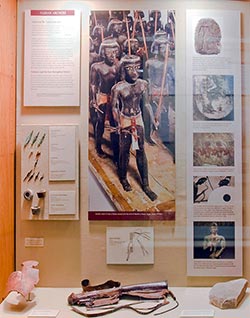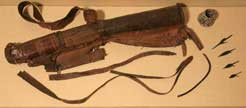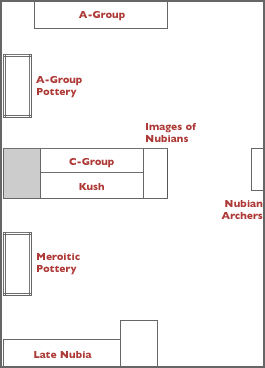Nubian Archers

Nubia was the “Land of the Bow”
Nubian hunters and warriors excelled as archers, and their weapon became a symbol for Nubia. “Land of the Bow” is the meaning of Ta-Seti, an ancient Egyptian term used to denote Nubia for thousands of years in antiquity.
Hunters using bows and arrows appear in Nubian rock art as early as the Neolithic period and hunting provided subsistence for Nubians throughout much of their history. Some of Nubia’s most important trade products, like animal skins and ivory, came from the hunt.
Archers formed the core of Nubian armies that vied with Egypt for control over parts of the Nile valley, conquered Egypt in the 8th century BC, and confronted the troops of the Assyrian empire. The skill of Nubian archers made them valued members in the military forces of other lands. Egyptian texts as early as 2400 BC note Nubians in Egyptian armies. Representations of Nubian warriors appear in Egyptian tomb models, reliefs, and paintings in all periods of ancient Egyptian history. Nubian archers also served as warriors in the imperial army of Persia in the first millennium BC.
Nubians used the bow throughout history
Burials of northern Nubian rulers in the 5th century AD show that they still relied on the bow and arrow. Nubia’s elite warriors of the time loosed their arrows from horseback and employed thumb rings to increase the force and accuracy of their shots. In the 8th century Nubian archers fought back Muslim invaders. In their account of the event, the Muslims noted the accuracy of Nubian arrows that drove them away.


Nubia Gallery Floor Plan


